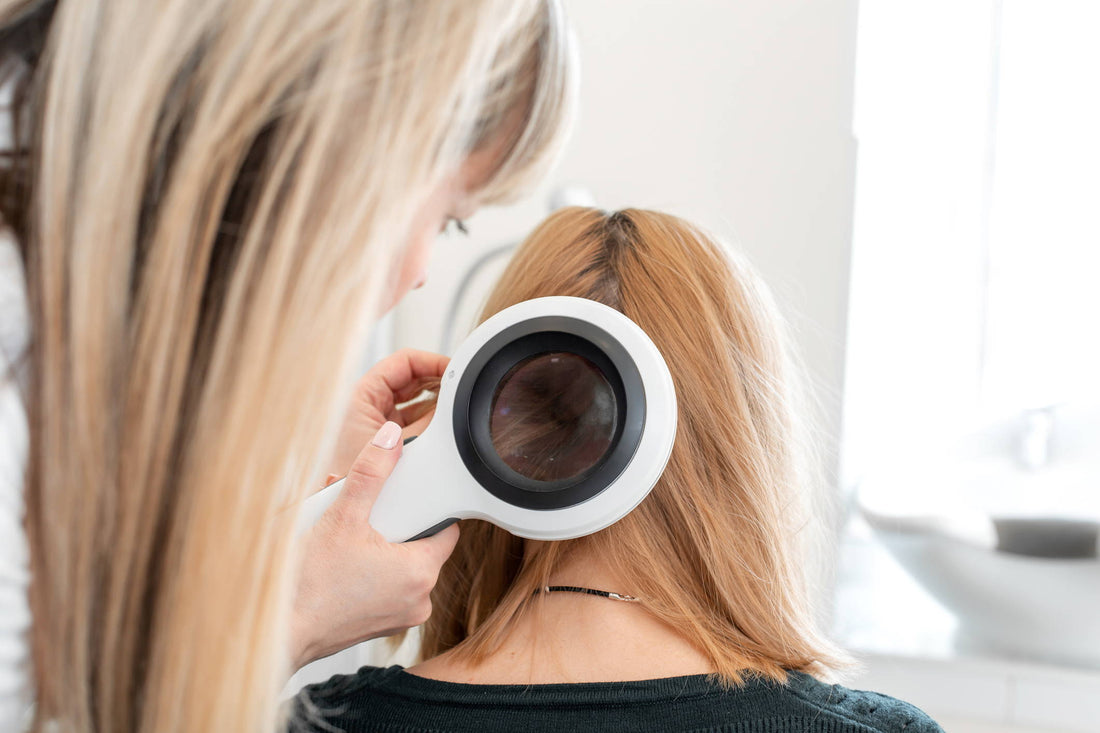We often associate hair thinning and hair loss with advancing age. But, hair loss isn't reserved for older folks. People can lose hair at any point in their lives. We also attribute hair loss to men, but most women will also experience some thinning at a certain point in their lives. No matter your age and sex, you should familiarize yourself with these five signs of hair thinning and hair loss so you can take action as early as possible to keep the hair on your head.
Sign #1: Watch for Changes on Your Hairline
The hairline is one of the first places we can see changes in our hair thickness. Fortunately, the hairline is easy to see, so we can keep tabs on it every day. Yet, when we see something daily, it is often easy to have changes go unnoticed for some time. Think of your waistline - often, we don't see that we are adding extra pounds to our waists until our pants are too tight to wear comfortably. The same is true for our hair. Therefore, keep a watchful eye on your hairline by not only examining it regularly but also take regular photos of your head (say, every other month) to monitor for any recession.
Sign #2: Your Hair Feels Thinner or Lighter All Over
Although we all have heard of the dreaded receding hairline, hair loss doesn't always start there. In fact, it can start anywhere, and people often find their hair generally becomes thinner all over their head. You can certainly look at your hair to see if it looks thinner, but it is usually best to actually feel your hair to check for density and thickness.
When you run your hands through your hair or grab clumps of hair in certain areas, make sure your hair is clean. Sometimes, the build-up of dead skin cells and oils can make hair seem more dense when it is not freshly washed, giving you a false impression of your hair thickness. People who wear a ponytail can also use that as a tool for assessing hair thickness.
Along with feeling your hair for density, photos are also a handy tool. Because you cannot see the back of your head and even the sides, it is helpful to take photos from multiple angles and compare them to past months.
Sign #3: Excessive Shedding
Hair shedding is entirely normal. Indeed, most people lose anywhere between 50-100 hairs per day. This number may seem like a lot, but it isn't when you consider there are thousands of hairs on your head, and they are all in different stages in the hair growth cycle. Can you imagine if all your hair follicles followed the same growth cycle? We would lose all of our hair every 4-7 years and have to regrow it!
Although shedding is normal, too much shedding can be a sign of a bigger problem. If you find that your hairbrush or comb is consistently covered in hair with every use, you may be struggling with long-term hair loss. Sometimes, people go through a temporary condition called telogen effluvium. In this condition, people shed more as a result of a stressful life event, such as losing a loved one or having a baby. However, telogen effluvium is temporary, so if excessive hair shedding continues for a long time and you haven't had a major stressor, there may be more going on.
You can also look at your pillow, floor, shower or tub, and clothing to see if hair is collecting there more than usual.
Sign #4: You Have Patches of Thinning or Balding
As a later sign, patches of thin hair or even balding can indicate that you have a hair loss condition such as male or female pattern hair loss (also known as androgenic alopecia) or an autoimmune condition.
One of the most common symptoms of autoimmune disorders is hair loss. For example, people with autoimmune thyroiditis, lupus, Graves' disease, and rheumatoid arthritis can struggle with hair loss. There is even an autoimmune condition where your immune system attacks your hair follicles, called alopecia areata. If you have thinning or bald patches, it is high time to visit your dermatologist to get the correct diagnosis so you can treat the underlying problem.
Sign #5: A widening Part
One of the most telltale signs of hair thinning in women is the part line. When your part begins to widen, or the hair becomes thinner in that area, it is a good indicator that your hair is thinning all over your head. Men who have a part line can also use this landmark for determining if they have hair loss.
If you have any signs of hair loss, it is time to take action. The longer you let your hair go without intervention, the harder it is to recoup your losses. Start by using a hair regrowth product like SPECTRAL.DNC-N to stimulate new growth and maintain healthy hair. To learn other ways to combat hair loss, chat with a product advisor at DS Laboratories to create a regime that will keep your hair thick and healthy.
Dermatologist Recommended Products For Hair Loss & Thinning Hair
Not sure what might be the right product choice for you? Schedule a free call today with one of our product advisors to get a custom recommendation for your hair loss based on your specific needs.

